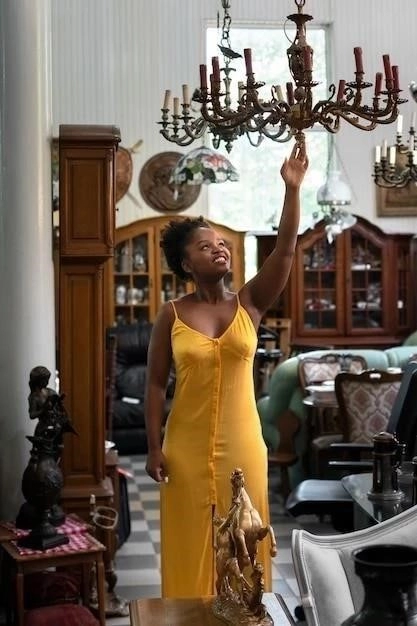The Studio Museum in Harlem: A Beacon of African-American Art
The Studio Museum in Harlem stands as a prominent institution dedicated to championing the work of artists of African descent. Established in 1968, the museum has played a pivotal role in showcasing and promoting the rich artistic heritage of the African diaspora.
Founding and Mission
The Studio Museum in Harlem was founded in 1968 during a period of significant social and cultural change in the United States. A group of artists, activists, and philanthropists, recognizing the need for a space dedicated to the artistic expressions of Black Americans, came together to establish the institution. Their vision was to create a platform for artists of African descent to showcase their work, nurture their talents, and engage with the local community. From its inception, The Studio Museum has remained committed to its mission of promoting the work of artists of African descent and providing a space for dialogue and exchange within the African diaspora. The museum’s unwavering dedication to this mission has positioned it as a leading voice in the art world, championing diversity, inclusivity, and the artistic contributions of Black artists from around the globe.
The Building and Its Transformation
The Studio Museum in Harlem has called 144 West 125th Street its home since 1982, occupying a building with a rich history of its own. Originally a dilapidated commercial space, the building underwent a significant renovation led by architect J. Max Bond Jr. to transform it into a suitable venue for the museum. This initial transformation reflected the museum’s commitment to revitalizing Harlem while providing a space for artistic expression. Currently, the museum is undergoing another major transformation. While the museum’s galleries are temporarily closed, the institution eagerly anticipates its new home on the same site, designed by Adjaye Associates with Cooper Robertson. This ambitious architectural project signals an exciting new chapter for the Studio Museum, promising an expanded and enhanced space to further its mission.
The Artist-in-Residence Program: Nurturing Emerging Talent
Central to the Studio Museum in Harlem’s mission is its renowned Artist-in-Residence program. Established in 1969, just a year after the museum’s founding, this program has become a cornerstone of the institution’s legacy. Each year, the program selects a cohort of emerging artists of African and Afro-Latinx descent, providing them with studio space, guidance from established mentors, and crucial professional development opportunities. The Artist-in-Residence program culminates in an annual exhibition, offering the residents a platform to showcase their work to a wider audience. This program has been instrumental in launching the careers of numerous significant figures in contemporary art, solidifying its reputation as one of the most prestigious and impactful artist residency programs in the world.

Notable Exhibitions
Throughout its history, The Studio Museum in Harlem has presented a diverse range of exhibitions that have shaped the discourse on African-American art and beyond. From early exhibitions like “Invisible Americans: Black Artists of the 30s” (1968), which shed light on overlooked figures, to more recent presentations of contemporary artists such as “And ever an edge: Studio Museum Artists in Residence 2022-23,” the museum has consistently provided a platform for artistic innovation and critical engagement. The Studio Museum’s exhibitions have not only showcased individual artists but have also explored broader themes and movements within African-American art, contributing significantly to the understanding and appreciation of this rich artistic tradition.
Harlem Postcards
“Harlem Postcards” is an ongoing project by The Studio Museum in Harlem that encapsulates the institution’s deep connection to its surrounding community. The project invites contemporary artists to create limited-edition postcards inspired by their perspectives on Harlem, capturing the neighborhood’s vibrant culture, history, and spirit. These postcards are then made available for purchase at the museum, with proceeds supporting the museum’s exhibitions and programs. “Harlem Postcards” serves as a testament to the museum’s commitment to engaging with its local community, providing a platform for artists to share their interpretations of Harlem’s unique character while offering the public a tangible piece of the neighborhood’s artistic legacy.

The Studio Museum’s Impact on Art History
The Studio Museum in Harlem has played a pivotal role in shaping the understanding and appreciation of African-American art within the broader context of art history. Since its founding, the museum has been instrumental in bringing to light the work of emerging and established Black artists, challenging traditional art historical narratives that often marginalized their contributions. Through its exhibitions, publications, and educational programs, The Studio Museum has fostered critical dialogue and scholarship, expanding the canon of art history to include a more inclusive and representative range of artistic voices. Its impact extends beyond the museum’s walls, influencing other institutions and inspiring generations of artists, curators, and scholars to engage with the rich legacy of African-American art.
Scholarship and Publications
The Studio Museum in Harlem is deeply committed to fostering scholarship and advancing the discourse on African-American art. The museum’s publications program plays a vital role in this endeavor, producing a wide range of scholarly texts, exhibition catalogs, and its biannual magazine, Studio. These publications serve as valuable resources for scholars, students, and art enthusiasts alike, offering in-depth analyses of the museum’s exhibitions, collections, and broader themes within African-American art history. Through its publications program, The Studio Museum in Harlem ensures that the scholarship it generates reaches a wide audience, further cementing its position as a leading voice in the field.
The Studio Museum’s Collection: A Celebration of Diversity
The Studio Museum in Harlem’s collection stands as a testament to the breadth and richness of art by artists of African descent. Comprising over 4,900 works, the collection encompasses a diverse range of media, from painting and sculpture to photography, prints, and mixed media. The collection reflects the museum’s commitment to showcasing both established and emerging artists, with a particular focus on those who have made significant contributions to the artistic landscape of Harlem and the African diaspora. Works by renowned artists such as Romare Bearden, Jacob Lawrence, and Kara Walker are featured alongside pieces by emerging talents, creating a dynamic dialogue across generations and artistic styles.
Community Engagement and Educational Initiatives
The Studio Museum in Harlem has always considered itself deeply rooted in its surrounding community. The museum’s commitment to community engagement is evident in its diverse range of educational programs and initiatives, which cater to audiences of all ages. From workshops for young artists to lectures by renowned scholars, the museum strives to make art accessible to all, fostering a deeper understanding and appreciation for the arts within Harlem and beyond. The Studio Museum’s educational programs often draw connections between art and broader social and cultural issues, encouraging critical thinking and dialogue among its diverse participants.

Collaborations with Other Institutions
Recognizing the importance of expanding its reach and impact, The Studio Museum in Harlem actively engages in collaborations with other institutions locally, nationally, and internationally. These collaborations take various forms, from joint exhibitions and artist exchanges to shared resources and expertise. Notably, the museum has partnered with institutions such as the Museum of Modern Art (MoMA) and MoMA PS1, allowing for greater visibility and access to its programs and exhibitions. These collaborative endeavors not only enhance the museum’s offerings but also foster a spirit of partnership and shared vision within the broader arts community, amplifying the impact of its mission and programs.
The Studio Museum’s Digital Presence

The Studio Museum in Harlem recognizes the importance of engaging audiences beyond its physical location and embraces a robust digital presence to extend its reach globally. The museum’s website serves as a comprehensive resource, providing information about its exhibitions, programs, collections, and history. Visitors to the website can explore artist profiles, delve into past exhibitions through digital archives, and stay abreast of the museum’s latest news and events. Additionally, The Studio Museum actively engages with audiences through social media platforms, sharing behind-the-scenes insights, artist interviews, and updates on its initiatives, further solidifying its commitment to accessibility and engagement in the digital realm.
Support and Funding
The Studio Museum in Harlem relies on a multifaceted funding model to support its exhibitions, programs, and operations. As a non-profit institution, the museum depends on the generosity of individuals, foundations, corporations, and government agencies that recognize the importance of its mission. Contributions from these diverse sources provide crucial support for the museum’s exhibitions, artist residencies, educational initiatives, and community outreach programs. The Studio Museum actively fundraises throughout the year, hosting events and cultivating relationships with donors who share its commitment to championing artists of African descent and fostering a greater understanding and appreciation for their work.
The Future of the Studio Museum
As The Studio Museum in Harlem eagerly anticipates the completion of its new building, the institution’s future appears bright with possibilities. This transformative project represents a renewed commitment to its founding mission while providing a state-of-the-art facility to further its impact. The expanded space will allow for more ambitious exhibitions, enhanced community engagement initiatives, and greater resources for artists. The Studio Museum is poised to continue its legacy as a leading voice in the art world, fostering dialogue, championing diversity, and expanding the appreciation for art by artists of African descent for generations to come.










